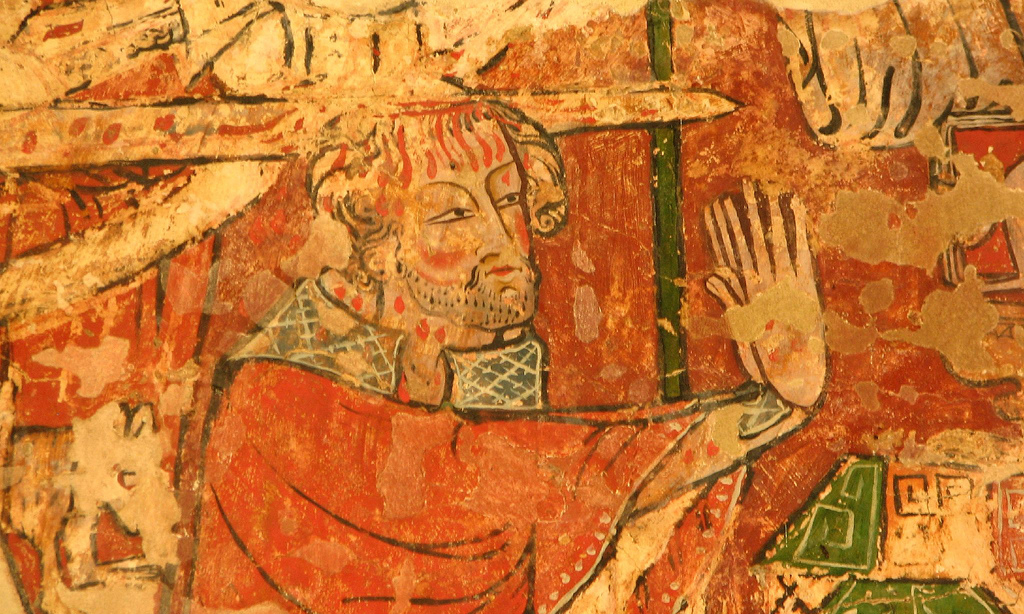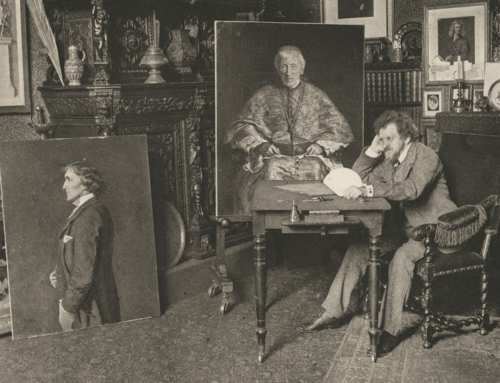What is place? Why does God choose to make some places holy?
Carved in the stone floor in the northwest transept of Canterbury Cathedral are two scratches. On December 29th, 1170, the first groove received, as though it were a chalice, the blood of St. Thomas Becket. While the saint was preparing for vespers, a murderous quartet of knights clamored into the cathedral, and one of them slashed the archbishop’s skull, gouging the floor and shattering his sword with the same blow. Becket had disputed with King Henry II over the authority of ecclesiastical rule, and the saint had stood boldly against the king at the risk of scandalizing the country. Henry II, in Herodian fashion, put out the hit: any time, any place, sacred or not. King Henry could not bear the witness of the saint.
The second scratch came by hammer rather than sword. Iconoclasts battered down the shrine dedicated to Becket, whose bones lay hidden behind ornate sculpture and gem. On November 16th, 1538, Henry VIII—with the blood of Thomas More on his right hand and the blood of John Fisher on his left—bade other hands to demolish Becket’s image. The proclamation reads, “His pictures throughout the realm are to be plucked down and his festival shall no longer be kept, and the services in his name shall be razed out of all books.” The adulterous, church-founding king had an earworm: the defiant archbishop’s cry to thousands of pilgrims. The impotent king bristled at the message, “You are not above the peerless sovereignty of God.” King Henry could not bear the witness of the saint.
Prior to Henry VIII’s iconoclasm, the Shrine of St. Thomas Becket was the third most visited pilgrimage site in all of Christendom, ceding to Rome and Santiago de Compostela. Today, a solitary flame illuminates the place where the English kings attempted to remove Becket. Wishing to scratch out the saint’s place in history, the two kings etched Becket into the very stones of Canterbury Cathedral. Today, Episcopalians will gather for evening song in commemoration of the slain archbishop. The place of Becket’s heroic testimony to the true faith still invites recollection and commemoration.
Commemoration means calling to mind, remembering an event, place, or time, so as to bring its reality to the forefront of one’s consciousness. Our Lord asks the apostles at the Last Supper to do these things in remembrance (Latin: commemoratio; Greek: anamnésis) of Him. Prior to this command, Israel was charged to remember the Lord by showbread and incense (Lev 24:7), trumpets (Num 10:10), prayer (Ps 38, Ps 70), and the sign of salvation (Wis 16:6). The Church continues this commemoration in the Holy Sacrifice of the Mass, where the reality of Christ’s Passion becomes present and effective. In a way only possible for God, the place of the skull is brought to the altar for us to recollect what God has done.
Outside of the Mass, the pious practice of making pilgrimage comes with a special grace. Aquinas admits that place acts as a starting point for recollection—a reality employed by rhetoricians like Cicero. The pilgrimage site acts as a place of grace. According to His inscrutable ways (Rm 11:33), Divine Wisdom has chosen particular places and events to manifest His mercy and coming. Why did Mary appear here in Fatima and here in Lourdes? Why did Christ walk on that sea? Why did God choose that mountain, Zion, for His dwelling?
Today’s feast of St. Thomas Becket invites us to contemplate the mystery of divine providence in that God’s grace comes to a person at a given time in a given place. The perfection of charity persevered in this cathedral, within these walls, upon this floor. This place has been consecrated with the blood of a martyr, a beautiful and pleasing sign of the Blood of Christ.
Additionally, this transformation of a northwest transept into a shrine betokens the greater mystery of an insignificant stable in a provincial town becoming the birthplace of God-in-the-flesh. What was Bethlehem prior to the Nativity? Yet, every member of the Body of Christ has a relation to that little town. It was here that He was born. This blessed earth nestled Him. This air received the first wail of the King of Kings (Wis 7:3).
Place takes on a reality that surpasses whatever it had been before. When God enters into place, He transforms what it is. The Canterbury transept is not just a room, but something close to God. Bethlehem is not just a Palestinian country town, but something close to God. When God chooses according to His wisdom, He makes a place holy and fitting for worship. He does this so that we might be closer to Him and become recollected to Him. In encountering a holy place, we become more aware of the greatest place, the place God has chosen to dwell.
✠
Photo by Fr. Lawrence Lew, O.P. (used with permission).







